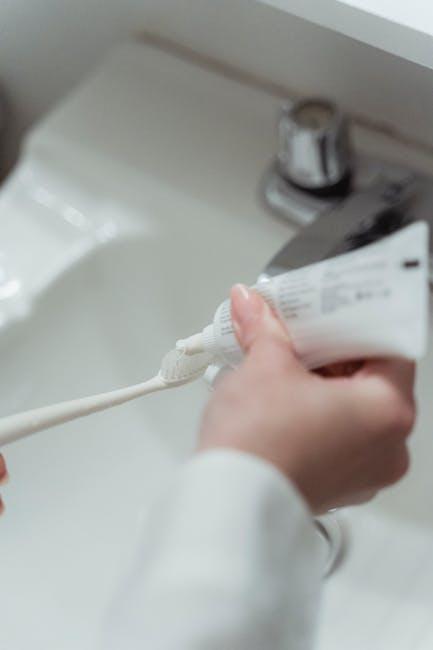Fluoride Ban Could Create Cavities For 1 Of Every 3 U.S. Kids – U.S. News & World Report
Fluoride is a crucial tool in preventing tooth decay, especially in children. Recent discussions and regulatory moves regarding fluoride bans have raised concerns about the potential health impact on younger generations. According to a report by U.S. News & World Report, banning fluoride could result in cavities for as many as one in three children in the United States. This article explores the significance of fluoride, the risks posed by a ban, and practical tips to safeguard children’s dental health in an evolving landscape.
The Role of Fluoride in Dental Health
Fluoride is a naturally occurring mineral found in water, soil, and various foods. It strengthens tooth enamel, making it more resistant to acid attacks from plaque bacteria and sugars in the mouth. For decades, public health officials have advocated water fluoridation and fluoride-containing dental products as effective means to reduce cavities.
- Cavity prevention: Fluoride helps remineralize early decay and prevent new cavities.
- Cost-effective: Community water fluoridation is recognized as one of the most economical ways to improve oral health.
- Parental protection: Helps children who may have limited access to dental care maintain healthy teeth.
What Could a Fluoride Ban Mean for U.S. Kids?
The potential banning or removal of fluoride from drinking water and dental products poses a significant public health risk. The latest data from U.S. health authorities suggests that one out of every three children could develop cavities if fluoride is eliminated.
Statistics Highlighting Cavity Risk
| Metric | With Fluoride | Without Fluoride |
|---|---|---|
| Children Affected by Cavities | ~20% | ~33% |
| Dental Treatments Needed | Low to Moderate | Significantly Higher |
| Cost of Dental Care (Average per Child) | $150 | $350+ |
Without community fluoride, parents may see a rise in dental emergencies, including painful cavities, tooth loss, and infections. This increase can not only affect children’s health but also place higher burdens on families and healthcare systems.
Benefits of Fluoride for Children
Numerous studies and health organizations emphasize the benefits of fluoride in oral care:
- Reduces tooth decay by up to 40-60% in children.
- Strengthens enamel during the critical years of tooth development.
- Safe for daily use in recommended doses.
- Supports oral health equity by preventing dental diseases in underserved communities.
Practical Tips to Protect Kids’ Teeth If Fluoride Use Is Restricted
In the event of a fluoride ban, parents and caregivers can implement these strategies to help keep children’s teeth healthy:
- Maintain proper oral hygiene: Encourage brushing twice daily with fluoride-free toothpaste that contains other tooth-strengthening ingredients.
- Limit sugary foods and drinks: Cutting down sugar reduces acid production that causes tooth decay.
- Regular dental check-ups: Schedule visits every six months for preventive care and early cavity detection.
- Use dental sealants: Protective coatings applied by dentists can shield molars from decay.
- Incorporate calcium-rich foods: Foods like cheese, yogurt, and leafy greens help strengthen teeth naturally.
- Encourage drinking water: Hydration promotes saliva flow, which naturally combats cavity-causing bacteria.
Case Studies: The Impact of Fluoride Removal
Historical examples worldwide demonstrate the consequences of fluoride removal:
- Alma, Michigan (Early 1970s): After stopping water fluoridation, tooth decay rates skyrocketed among children, leading to reinstatement of fluoride within a few years.
- Calgary, Canada (Post-2011 Fluoride Removal): Reports suggest increased dental problems in children and increased treatments.
These case studies underline the importance of fluoride as a public health measure and warn against the unintended consequences of bans.
Firsthand Experience: A Parent’s Perspective
Sarah J., a mother from Chicago, shared her story after her community debated removing fluoride from drinking water:
“Our youngest son started getting cavities even though we brushed regularly. We learned that without fluoride, his teeth were more vulnerable. When our town reinstated fluoride, his dental visits stabilized, and fewer treatments were needed. Fluoride truly protects our kids, especially those who can’t afford complex dental care.”
Conclusion: Why Fluoride Should Stay in Our Communities
The proposed fluoride ban threatens the oral health of millions of American children. As research and real-world experience affirm, fluoride’s cavity-preventing properties are vital in reducing tooth decay, minimizing dental costs, and improving quality of life. Parents, policymakers, and healthcare professionals must weigh the risks of removing this proven public health intervention.
By maintaining the use of fluoride and adopting healthy dental habits, we can work together to safeguard the smiles of future generations. For more information on fluoride and dental health, visit reputable sources like the CDC Fluoridation Program or consult your family dentist.


